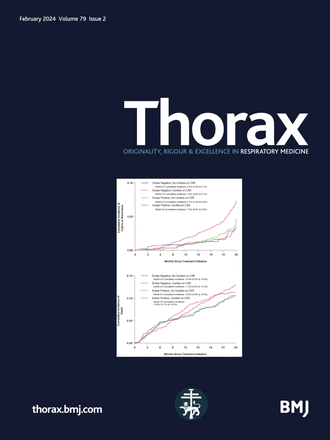Journal club
IF 7.7
1区 医学
Q1 RESPIRATORY SYSTEM
引用次数: 0
Abstract
There are ongoing efforts to develop a precision medicine approach in small cell lung cancer (SCLC) where patients can be stratified based on their tumour molecular profile and treated with optimal targeted therapies. In this regard, Umemura et-al attempted to classify SCLC into clinically-relevant subtypes based on genetic profiling of a large sample size of tumour tissues via next-generation sequencing testing ( J Thoracic Oncol 2025;doi: 10.1016/j.jtho.2024.10.004). According to their findings, patients with SCLC can be classified into five molecular subtypes: NSCLC (genetic alterations associated with non-small cell lung cancer (NSCLC)), PI3K (phosphatidylinositol 3-kinase (PI3K)/AKT/mammalian target of rapamycin (mTOR) pathway mutations), HME (mutations in the histone-modifying enzymes), MYC ( MYC family amplifications), and Hotspot (targetable hotspot mutations common in tumours). These subtypes were associated with distinct clinical data, with the NSCLC and MYC subtypes exhibiting poorer prognosis in response to chemotherapy while the HME subtype patients displayed improved outcomes under treatment with chemo-immunotherapy. Umemura et-al also conducted a phase II clinical trial of gedatolisib (a potent inhibitor of all class I PI3K isoforms, mTORC1, and mTORC2) for SCLC which exhibited therapeutic efficacy only in SCLC patients categorised in the PI3K subgroup. Overall, the findings of this study provide important molecular insights into the heterogeneity of the biology of SCLCs, represent a step forward towards reaching precision medicine in SCLC, and …杂志俱乐部
目前正在努力开发一种针对小细胞肺癌(SCLC)的精准医学方法,根据患者的肿瘤分子特征对患者进行分层,并采用最佳靶向治疗。在这方面,Umemura等人试图通过下一代测序测试,基于大样本肿瘤组织的遗传谱,将SCLC分类为临床相关亚型(J Thoracic Oncol 2025;doi: 10.1016/j.j jthos .2024.10.004)。根据他们的研究结果,SCLC患者可分为5个分子亚型:NSCLC(与非小细胞肺癌(NSCLC)相关的遗传改变)、PI3K(磷脂酰肌醇3-激酶(PI3K)/AKT/哺乳动物雷帕霉素靶点(mTOR)途径突变)、HME(组蛋白修饰酶突变)、MYC (MYC家族扩增)和Hotspot(肿瘤中常见的可靶向热点突变)。这些亚型与不同的临床数据相关,NSCLC和MYC亚型在化疗反应中表现出较差的预后,而HME亚型患者在化疗免疫治疗下表现出改善的预后。Umemura等人还进行了gedatolisib(所有I类PI3K亚型,mTORC1和mTORC2的有效抑制剂)用于SCLC的II期临床试验,该试验仅对PI3K亚组的SCLC患者显示出治疗效果。总的来说,本研究的发现为SCLC生物学的异质性提供了重要的分子见解,代表了SCLC精准医学的一步。
本文章由计算机程序翻译,如有差异,请以英文原文为准。
求助全文
约1分钟内获得全文
求助全文
来源期刊

Thorax
医学-呼吸系统
CiteScore
16.10
自引率
2.00%
发文量
197
审稿时长
1 months
期刊介绍:
Thorax stands as one of the premier respiratory medicine journals globally, featuring clinical and experimental research articles spanning respiratory medicine, pediatrics, immunology, pharmacology, pathology, and surgery. The journal's mission is to publish noteworthy advancements in scientific understanding that are poised to influence clinical practice significantly. This encompasses articles delving into basic and translational mechanisms applicable to clinical material, covering areas such as cell and molecular biology, genetics, epidemiology, and immunology.
 求助内容:
求助内容: 应助结果提醒方式:
应助结果提醒方式:


